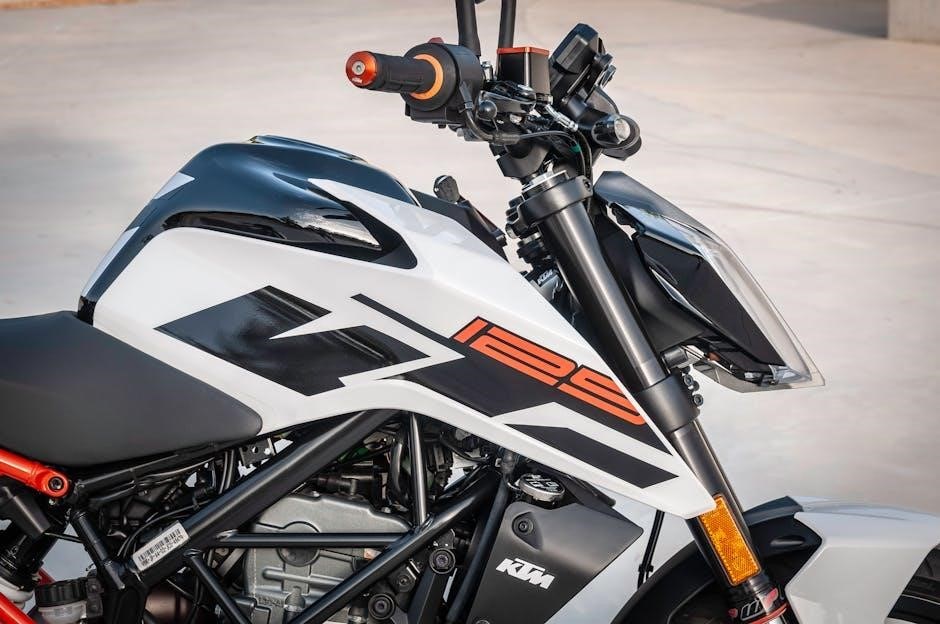
Parking brake systems vary by vehicle, consult owner’s manual for specific information on proper use and maintenance to ensure safety and functionality of the parking brake mechanism always.
Purpose of Parking Brake
The primary purpose of a parking brake is to keep a vehicle securely motionless when parked, preventing it from rolling or moving unintentionally. This is especially important on sloping or uneven surfaces, where a vehicle could potentially roll away if not properly secured. The parking brake is typically used in conjunction with the transmission or gearshift to ensure the vehicle remains stationary. By engaging the parking brake, drivers can prevent accidents and ensure their safety, as well as the safety of others; It is essential to use the parking brake correctly, as improper use can lead to damage or wear on the brake system. The owner’s manual provides specific guidance on the proper use and maintenance of the parking brake mechanism, which should be consulted to ensure safe and effective operation. Proper use of the parking brake is crucial for vehicle safety and longevity.
Components of Parking Brake
The parking brake system consists of several key components, including a lever or pedal, a cable system, and brake calipers or wheel cylinders. The lever or pedal is typically located in the driver’s compartment and is used to engage and disengage the parking brake. The cable system connects the lever or pedal to the brake calipers or wheel cylinders, which apply pressure to the brake pads or shoes to hold the vehicle in place. The components of the parking brake system work together to provide a secure and reliable way to hold the vehicle stationary. The owner’s manual provides a detailed description of the components and their functions, as well as instructions for proper maintenance and repair. Regular inspection and maintenance of the parking brake components are essential to ensure safe and effective operation. The parking brake system is a critical safety feature that requires attention and care.

Types of Parking Brakes
Parking brakes come in mechanical and electric types, each with unique characteristics and functions for vehicle safety and control systems always.
Mechanical Parking Brakes
Mechanical parking brakes are commonly used in vehicles, they typically consist of a handbrake lever or pedal that activates a cable system connected to the rear brakes. The cable pulls on a mechanism that engages the rear brakes, holding the vehicle in place. This type of parking brake is reliable and easy to maintain, however, it can be prone to wear and tear over time. Regular inspection and maintenance of the mechanical parking brake system is necessary to ensure it functions properly. The owner’s manual provides specific instructions on how to use and maintain the mechanical parking brake system for each vehicle make and model. It is essential to follow these guidelines to ensure safe and effective use of the parking brake. By understanding how mechanical parking brakes work, vehicle owners can take steps to maintain and repair the system as needed.
Electric Parking Brakes
Electric parking brakes are a modern alternative to traditional mechanical systems, they offer improved convenience and safety features. This type of parking brake uses electronic motors to engage and disengage the brakes, eliminating the need for a manual lever or pedal. The electric parking brake system is typically controlled by a button or switch, and may be integrated with other vehicle systems such as electronic stability control. The owner’s manual provides detailed information on the operation and maintenance of the electric parking brake system, including any specific requirements or recommendations for use. Electric parking brakes are designed to be reliable and durable, but regular inspection and maintenance are still necessary to ensure proper function. By following the guidelines outlined in the owner’s manual, vehicle owners can enjoy the benefits of electric parking brakes while minimizing the risk of problems or malfunctions. Proper use and maintenance are essential for safe and effective operation.

Precautions for Using Parking Brake
Always follow owner’s manual guidelines for safe parking brake use and maintenance to avoid accidents.
Avoiding Parking Brake in Certain Conditions

According to various sources, it is recommended to avoid using the parking brake in certain conditions to prevent damage or accidents. For instance, in slushy or icy conditions, the parking brake mechanism could ice over and refuse to disengage when trying to drive away. This could lead to safety issues and potentially cause accidents. Additionally, using the parking brake in extreme weather conditions may also affect its performance and longevity. It is essential to consult the owner’s manual for specific guidelines on using the parking brake in different conditions. By following these guidelines, drivers can ensure safe and proper use of the parking brake. Moreover, being aware of the conditions that may affect the parking brake’s performance can help prevent potential problems and maintain the vehicle’s overall safety and functionality. This information is crucial for drivers to know and understand.
Importance of Consulting Owner’s Manual
The owner’s manual is a vital resource for drivers to understand the proper use and maintenance of their vehicle’s parking brake. Consulting the manual can provide valuable information on how to engage and disengage the parking brake, as well as troubleshoot common issues. By reading the manual, drivers can learn about the specific features and functions of their vehicle’s parking brake system. This knowledge can help prevent accidents and ensure safe driving practices. Furthermore, the manual may include guidelines for inspecting and maintaining the parking brake, which can help extend its lifespan. It is essential for drivers to familiarize themselves with the information in the owner’s manual to get the most out of their vehicle’s parking brake and to stay safe on the road. Regularly reviewing the manual can also help drivers stay up-to-date on any updates or changes to the parking brake system.
Parking brake safety and functionality depend on proper use and maintenance, as outlined in the vehicle’s owner’s manual always for driver’s safety and vehicle longevity purposes only.
Additional Information

For more details on the parking brake system, it is recommended to consult the vehicle’s owner’s manual, which provides specific information on proper use and maintenance. The manual will outline the steps to engage and disengage the parking brake, as well as any specific requirements for the vehicle’s make and model. Additionally, the manual may provide troubleshooting tips and guidance on how to address common issues with the parking brake. By following the manufacturer’s instructions and guidelines, drivers can ensure the safe and effective operation of the parking brake, which is essential for preventing accidents and maintaining vehicle safety. Furthermore, consulting the owner’s manual can help drivers to better understand the parking brake system and its components, allowing them to take a more proactive approach to maintenance and upkeep. This can help to extend the lifespan of the vehicle and prevent costly repairs down the line.